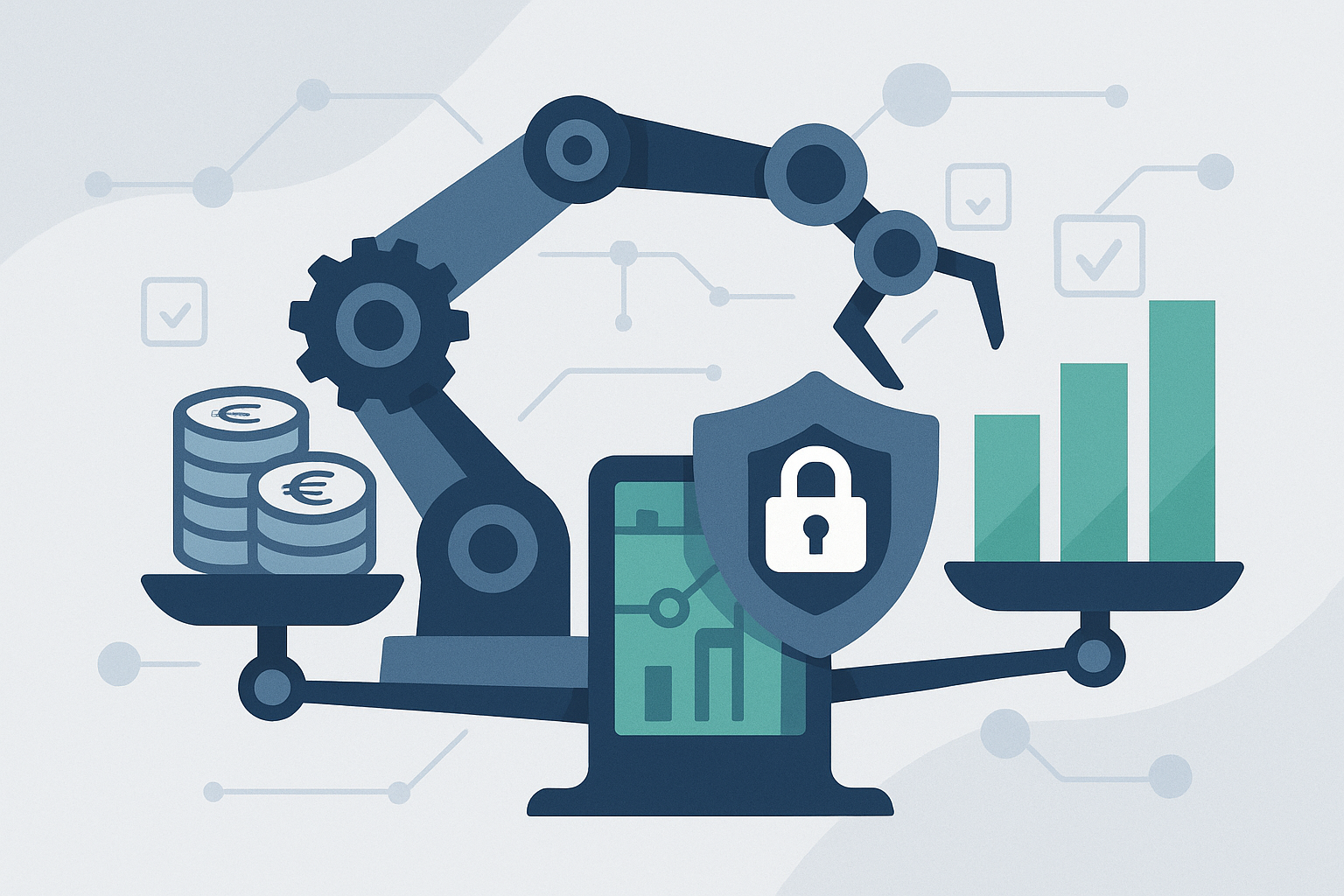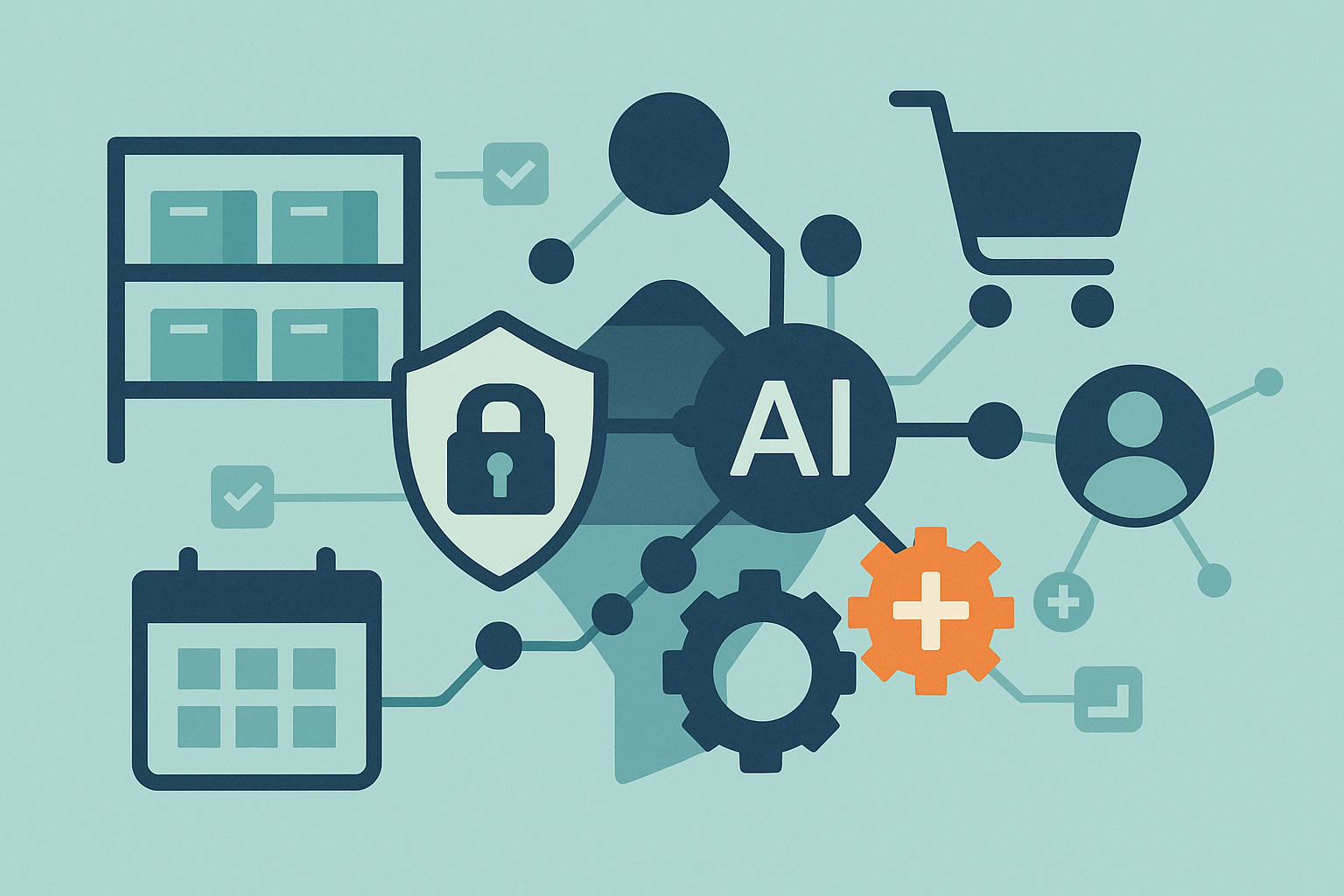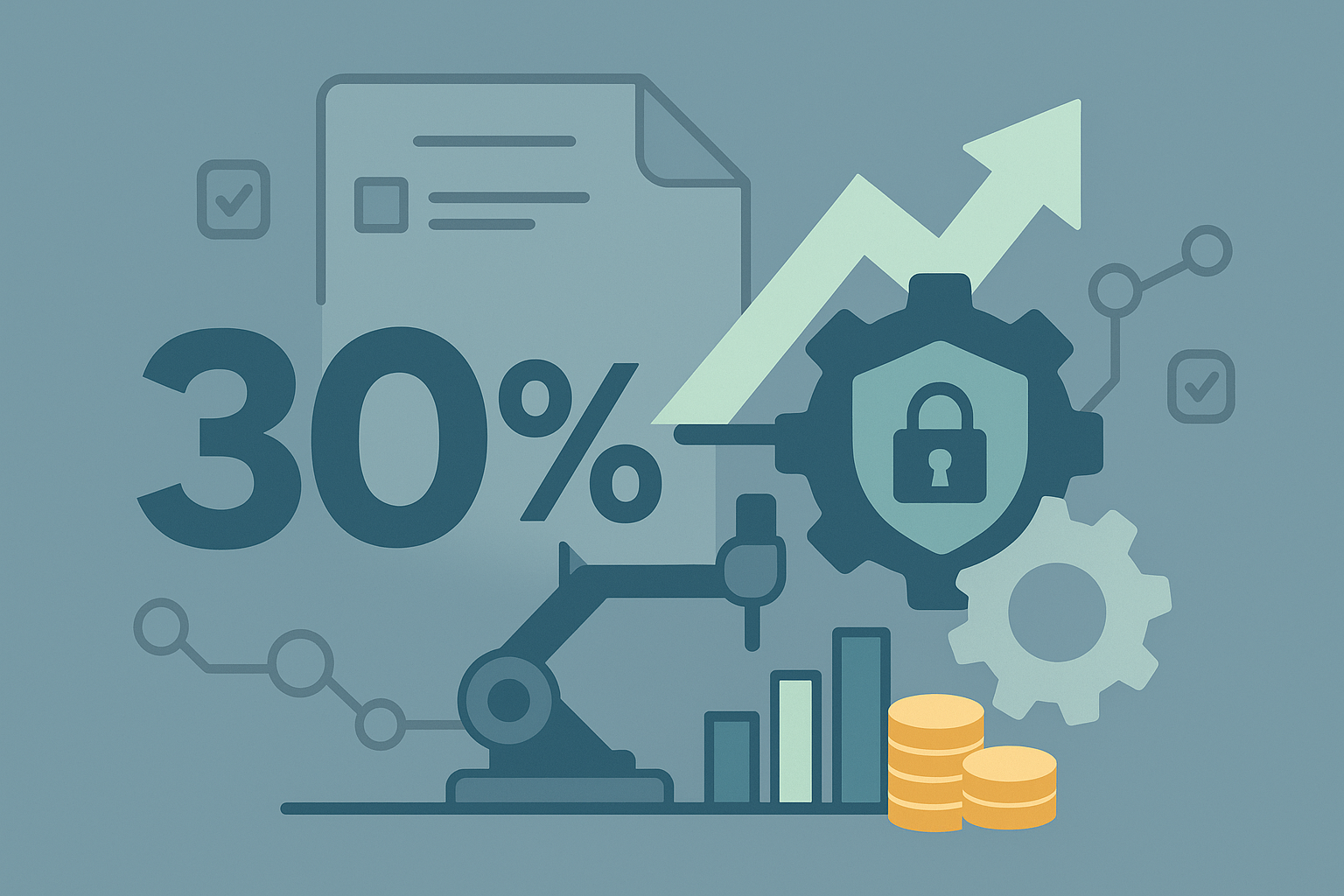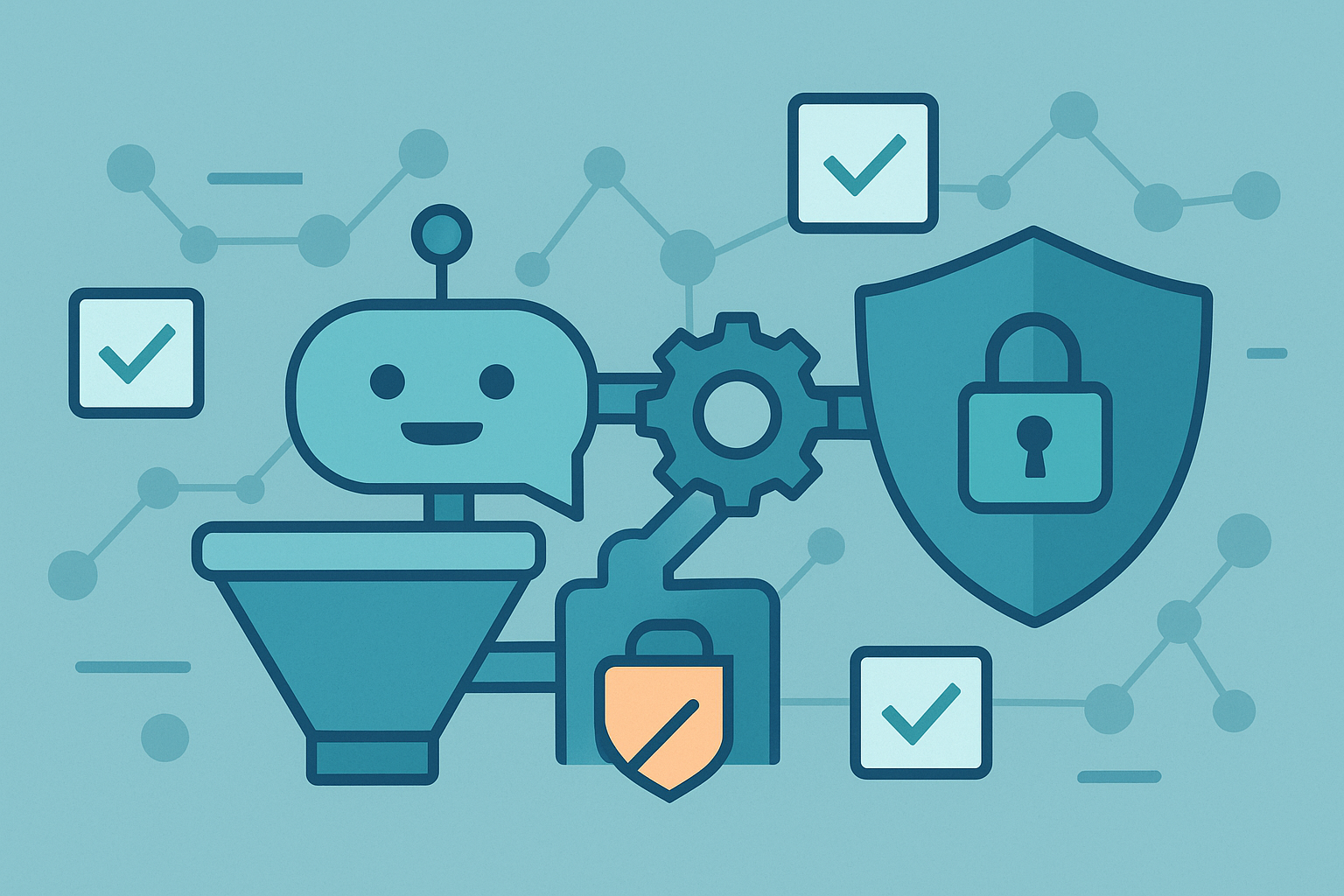Budget-ROI-Analyse: Kosten vs. Nutzen von RPA-Projekten
Detaillierte ROI-Berechnung für RPA-Projekte: Investitionskosten, Einsparungen und Amortisationszeit. Fundierte Entscheidungsgrundlage für Ihr Unternehmen.

Budget-ROI-Analyse: Kosten vs. Nutzen von RPA-Projekten
Robotic Process Automation (RPA) verspricht erhebliche Effizienzsteigerungen, aber wie rechtfertigen Sie die Investition vor dem Management? Eine fundierte ROI-Analyse ist der Schlüssel zum Erfolg. Dieser umfassende Leitfaden zeigt Ihnen, wie Sie Business Cases für RPA-Projekte erstellen, die überzeugen und realistische Erwartungen setzen.
Warum ROI-Analysen bei RPA kritisch sind
Die RPA-Realität in deutschen Unternehmen
- 67% der RPA-Projekte überschreiten das geplante Budget
- 54% erreichen nicht die erwarteten Einsparungen im ersten Jahr
- 89% der erfolgreichen Projekte hatten eine detaillierte ROI-Analyse vor Start
- Durchschnittliche Amortisationszeit: 8-14 Monate bei korrekter Planung
Häufige Kalkulationsfehler
Viele Unternehmen unterschätzen:
- Versteckte Kosten: Change Management, Training, Wartung
- Prozess-Komplexität: Ausnahmebehandlung und Edge Cases
- Skalierungsaufwand: Von Pilot zu Enterprise-Rollout
- Maintenance-Aufwand: Updates, Anpassungen, Support
Entdecken Sie auch n8n-Anwendungsfälle als kosteneffiziente Alternative zu kommerziellen RPA-Lösungen.
Vollständige Kostenanalyse für RPA-Projekte
1. Initiale Investitionskosten
// Detaillierte Kostenaufstellung für RPA-Implementierung
class RPACostCalculator {
constructor(projectScope) {
this.projectScope = projectScope;
this.costCategories = {
software_licensing: {},
infrastructure: {},
implementation: {},
training: {},
change_management: {},
ongoing_operations: {}
};
}
calculateInitialInvestment() {
const costs = {
// Software-Lizenzen
rpa_platform_license: this.calculateLicenseCosts(),
development_tools: this.calculateDevelopmentToolCosts(),
monitoring_tools: this.calculateMonitoringCosts(),
// Infrastruktur
server_infrastructure: this.calculateInfrastructureCosts(),
security_setup: this.calculateSecurityCosts(),
backup_disaster_recovery: this.calculateBDRCosts(),
// Implementierung
consulting_fees: this.calculateConsultingCosts(),
internal_resources: this.calculateInternalResourceCosts(),
process_analysis: this.calculateAnalysisCosts(),
development_costs: this.calculateDevelopmentCosts(),
testing_qa: this.calculateTestingCosts(),
// Training und Change Management
staff_training: this.calculateTrainingCosts(),
change_management: this.calculateChangeManagementCosts(),
documentation: this.calculateDocumentationCosts()
};
costs.total_initial = Object.values(costs).reduce((sum, cost) => sum + cost, 0);
costs.contingency = costs.total_initial * 0.15; // 15% Risikopuffer
costs.total_with_contingency = costs.total_initial + costs.contingency;
return costs;
}
calculateLicenseCosts() {
const licenseModels = {
attended_robot: {
cost_per_license: 5000, // € pro Jahr
required_licenses: this.projectScope.attended_users
},
unattended_robot: {
cost_per_license: 15000, // € pro Jahr
required_licenses: this.projectScope.unattended_processes
},
development_license: {
cost_per_license: 12000, // € pro Jahr
required_licenses: this.projectScope.developers
},
orchestrator: {
cost_per_license: 25000, // € pro Jahr
required_licenses: 1 // Meist eine zentrale Instanz
}
};
let totalLicenseCosts = 0;
Object.entries(licenseModels).forEach(([type, config]) => {
totalLicenseCosts += config.cost_per_license * config.required_licenses;
});
// Erste Jahr Kosten + Support (20%)
return totalLicenseCosts * 1.2;
}
calculateInfrastructureCosts() {
const infrastructure = {
server_hardware: {
development: 15000,
test: 10000,
production: 25000,
disaster_recovery: 20000
},
network_setup: 8000,
security_infrastructure: 12000,
monitoring_tools: 5000,
cloud_setup: this.projectScope.cloud_hosting ? 3000 : 0
};
return Object.values(infrastructure.server_hardware).reduce((sum, cost) => sum + cost, 0) +
infrastructure.network_setup +
infrastructure.security_infrastructure +
infrastructure.monitoring_tools +
infrastructure.cloud_setup;
}
calculateImplementationCosts() {
const hourlyRates = {
senior_consultant: 150,
junior_consultant: 95,
solution_architect: 180,
project_manager: 120,
business_analyst: 110
};
const timeEstimates = {
process_analysis: {
senior_consultant: this.projectScope.processes * 16,
business_analyst: this.projectScope.processes * 24
},
solution_design: {
solution_architect: this.projectScope.processes * 12,
senior_consultant: this.projectScope.processes * 8
},
development: {
senior_consultant: this.projectScope.processes * 40,
junior_consultant: this.projectScope.processes * 60
},
testing: {
senior_consultant: this.projectScope.processes * 16,
business_analyst: this.projectScope.processes * 20
},
deployment: {
solution_architect: this.projectScope.processes * 8,
senior_consultant: this.projectScope.processes * 12
},
project_management: {
project_manager: (this.projectScope.processes * 160) * 0.15 // 15% Overhead
}
};
let totalImplementationCost = 0;
Object.entries(timeEstimates).forEach(([phase, roles]) => {
Object.entries(roles).forEach(([role, hours]) => {
totalImplementationCost += hours * hourlyRates[role];
});
});
return totalImplementationCost;
}
}
2. Laufende Betriebskosten
Jährliche Betriebskosten-Kalkulation:
// Ongoing Operational Costs
class RPAOperationalCosts {
constructor(initialSetup) {
this.initialSetup = initialSetup;
}
calculateAnnualOperationalCosts() {
const operationalCosts = {
// Software-Wartung und Support
license_renewal: this.calculateLicenseRenewal(),
software_maintenance: this.calculateMaintenanceCosts(),
upgrades_updates: this.calculateUpgradeCosts(),
// Personal
rpa_administrator: this.calculateAdminCosts(),
business_analyst: this.calculateAnalystCosts(),
support_desk: this.calculateSupportCosts(),
// Infrastruktur
server_maintenance: this.calculateServerMaintenance(),
cloud_hosting: this.calculateCloudCosts(),
backup_storage: this.calculateBackupCosts(),
// Compliance und Governance
security_audits: this.calculateSecurityCosts(),
compliance_monitoring: this.calculateComplianceCosts(),
documentation_updates: this.calculateDocumentationCosts(),
// Continuous Improvement
process_optimization: this.calculateOptimizationCosts(),
new_process_development: this.calculateNewProcessCosts(),
training_updates: this.calculateTrainingCosts()
};
operationalCosts.total_annual = Object.values(operationalCosts)
.reduce((sum, cost) => sum + cost, 0);
// 10% Puffer für unvorhergesehene Kosten
operationalCosts.contingency = operationalCosts.total_annual * 0.1;
operationalCosts.total_with_contingency = operationalCosts.total_annual + operationalCosts.contingency;
return operationalCosts;
}
calculateLicenseRenewal() {
// Jährliche Lizenzkosten (meist 80% der initialen Kosten)
return this.initialSetup.software_costs * 0.8;
}
calculateMaintenanceCosts() {
// 20% der initialen Software-Kosten für Maintenance
return this.initialSetup.software_costs * 0.2;
}
calculateAdminCosts() {
// 1 FTE RPA Administrator pro 50 Bots
const requiredAdmins = Math.ceil(this.initialSetup.bot_count / 50);
const adminSalaryWithBenefits = 75000; // € pro Jahr inkl. Benefits
return requiredAdmins * adminSalaryWithBenefits;
}
calculateAnalystCosts() {
// 0.5 FTE Business Analyst pro 25 Prozesse
const requiredAnalysts = Math.ceil(this.initialSetup.process_count / 25) * 0.5;
const analystSalaryWithBenefits = 68000; // € pro Jahr inkl. Benefits
return requiredAnalysts * analystSalaryWithBenefits;
}
}
Nutzen-Quantifizierung: Der Schlüssel zum RPA-ROI
1. Direkte Kosteneinsparungen
Zeitersparnis-Berechnung:
// Time Savings Calculator für RPA-Projekte
class RPABenefitsCalculator {
constructor(processData) {
this.processData = processData;
}
calculateTimeSavings() {
const timeSavings = this.processData.map(process => {
const currentTime = this.calculateCurrentProcessTime(process);
const automatedTime = this.calculateAutomatedProcessTime(process);
const timeSaved = currentTime - automatedTime;
return {
process_name: process.name,
current_time_minutes: currentTime,
automated_time_minutes: automatedTime,
time_saved_minutes: timeSaved,
annual_volume: process.annual_volume,
total_annual_savings_hours: (timeSaved * process.annual_volume) / 60,
cost_savings_per_year: this.calculateCostSavings(timeSaved, process)
};
});
return timeSavings;
}
calculateCurrentProcessTime(process) {
const steps = process.steps;
let totalTime = 0;
steps.forEach(step => {
totalTime += step.average_time_minutes;
// Berücksichtigung von Fehlern und Wiederholungen
if (step.error_rate > 0) {
totalTime += step.average_time_minutes * step.error_rate * step.rework_factor;
}
// Berücksichtigung von Wartezeiten
if (step.wait_time_minutes > 0) {
totalTime += step.wait_time_minutes;
}
});
// Overhead für Kontextwechsel und Unterbrechungen (15-25%)
const humanOverhead = totalTime * 0.2;
return totalTime + humanOverhead;
}
calculateAutomatedProcessTime(process) {
const steps = process.steps;
let totalTime = 0;
steps.forEach(step => {
if (step.automatable) {
// Automatisierte Schritte sind 5-10x schneller
totalTime += step.average_time_minutes / 7;
// Sehr niedrige Fehlerrate bei Automatisierung (0.1%)
totalTime += (step.average_time_minutes / 7) * 0.001 * step.rework_factor;
} else {
// Manuelle Schritte bleiben gleich
totalTime += step.average_time_minutes;
totalTime += step.average_time_minutes * step.error_rate * step.rework_factor;
}
// Reduzierte Wartezeiten durch 24/7 Verfügbarkeit
if (step.wait_time_minutes > 0 && step.automatable) {
totalTime += step.wait_time_minutes * 0.1; // 90% Reduktion
} else if (step.wait_time_minutes > 0) {
totalTime += step.wait_time_minutes;
}
});
// Minimaler Overhead für automatisierte Prozesse (2-5%)
const automationOverhead = totalTime * 0.03;
return totalTime + automationOverhead;
}
calculateCostSavings(timeSavedMinutes, process) {
const hoursSaved = timeSavedMinutes / 60;
const annualHoursSaved = hoursSaved * process.annual_volume;
// Durchschnittliche Vollkosten pro Arbeitsstunde in Deutschland
const fullyLoadedHourlyRate = process.employee_level === 'specialist' ? 45 :
process.employee_level === 'senior' ? 65 :
process.employee_level === 'expert' ? 85 : 35;
return annualHoursSaved * fullyLoadedHourlyRate;
}
}
2. Indirekte Nutzen und Soft Benefits
Qualitative Vorteile quantifizieren:
// Soft Benefits Quantification
class RPASoftBenefitsCalculator {
constructor(organizationData) {
this.organizationData = organizationData;
}
quantifySoftBenefits() {
const softBenefits = {
improved_accuracy: this.calculateAccuracyBenefits(),
enhanced_compliance: this.calculateComplianceBenefits(),
employee_satisfaction: this.calculateSatisfactionBenefits(),
faster_processing: this.calculateSpeedBenefits(),
scalability: this.calculateScalabilityBenefits(),
data_quality: this.calculateDataQualityBenefits(),
customer_satisfaction: this.calculateCustomerSatisfactionBenefits(),
risk_reduction: this.calculateRiskReductionBenefits()
};
softBenefits.total_annual_value = Object.values(softBenefits)
.reduce((sum, benefit) => sum + (benefit.annual_value || 0), 0);
return softBenefits;
}
calculateAccuracyBenefits() {
const currentErrorRate = this.organizationData.current_error_rate || 0.02; // 2%
const targetErrorRate = 0.001; // 0.1% mit RPA
const errorReduction = currentErrorRate - targetErrorRate;
const transactionVolume = this.organizationData.annual_transaction_volume;
const costPerError = this.organizationData.average_cost_per_error || 50; // €
const annualErrorReduction = transactionVolume * errorReduction;
const annualSavings = annualErrorReduction * costPerError;
return {
error_reduction_percentage: (errorReduction / currentErrorRate) * 100,
annual_errors_prevented: annualErrorReduction,
annual_value: annualSavings,
confidence_level: 'high' // Gut messbar
};
}
calculateComplianceBenefits() {
const complianceRisk = this.organizationData.compliance_risk_assessment || 'medium';
const riskReductionFactor = {
'low': 0.3,
'medium': 0.6,
'high': 0.8
}[complianceRisk];
// Durchschnittliche Compliance-Strafkosten in Deutschland
const potentialFineAmount = this.organizationData.industry === 'financial' ? 250000 :
this.organizationData.industry === 'healthcare' ? 180000 :
this.organizationData.industry === 'retail' ? 120000 : 80000;
const fineRiskProbability = 0.15; // 15% Wahrscheinlichkeit pro Jahr
const expectedAnnualRisk = potentialFineAmount * fineRiskProbability;
const riskReduction = expectedAnnualRisk * riskReductionFactor;
return {
risk_reduction_percentage: riskReductionFactor * 100,
annual_value: riskReduction,
confidence_level: 'medium' // Schwer exakt vorherzusagen
};
}
calculateEmployeeSatisfactionBenefits() {
const employeesAffected = this.organizationData.employees_affected;
const currentTurnoverRate = this.organizationData.turnover_rate || 0.12; // 12%
const satisfactionImprovement = 0.25; // 25% Verbesserung der Zufriedenheit
const turnoverReduction = currentTurnoverRate * 0.3; // 30% weniger Turnover
const averageRecruitmentCost = 15000; // € pro Neueinstellung
const annualTurnoverReduction = employeesAffected * turnoverReduction;
const recruitmentSavings = annualTurnoverReduction * averageRecruitmentCost;
// Produktivitätssteigerung durch höhere Motivation
const averageSalary = 55000; // € pro Jahr
const productivityIncrease = 0.08; // 8% Steigerung
const productivityValue = employeesAffected * averageSalary * productivityIncrease;
return {
turnover_reduction_percentage: (turnoverReduction / currentTurnoverRate) * 100,
recruitment_savings: recruitmentSavings,
productivity_increase: productivityValue,
annual_value: recruitmentSavings + productivityValue,
confidence_level: 'medium'
};
}
}
ROI-Berechnung und Amortisationsanalyse
Comprehensive ROI Model
// Vollständige ROI-Analyse für RPA-Projekte
class RPAROICalculator {
constructor(costs, benefits, timeframe = 5) {
this.costs = costs;
this.benefits = benefits;
this.timeframe = timeframe; // Jahre
this.discountRate = 0.08; // 8% Diskontierungssatz
}
calculateROI() {
const cashFlows = this.generateCashFlowProjections();
const npv = this.calculateNPV(cashFlows);
const irr = this.calculateIRR(cashFlows);
const paybackPeriod = this.calculatePaybackPeriod(cashFlows);
const profitabilityIndex = this.calculateProfitabilityIndex(cashFlows);
return {
cash_flows: cashFlows,
net_present_value: npv,
internal_rate_of_return: irr,
payback_period_months: paybackPeriod,
profitability_index: profitabilityIndex,
roi_percentage: this.calculateSimpleROI(),
sensitivity_analysis: this.performSensitivityAnalysis(),
risk_assessment: this.assessProjectRisk()
};
}
generateCashFlowProjections() {
const cashFlows = [];
for (let year = 0; year <= this.timeframe; year++) {
let cashFlow = 0;
if (year === 0) {
// Initial investment
cashFlow = -this.costs.initial_investment;
} else {
// Annual benefits minus annual costs
const benefits = this.projectBenefitsGrowth(year);
const costs = this.projectCostsGrowth(year);
cashFlow = benefits - costs;
}
cashFlows.push({
year: year,
cash_flow: cashFlow,
cumulative_cash_flow: year === 0 ? cashFlow :
cashFlows[year - 1].cumulative_cash_flow + cashFlow,
present_value: cashFlow / Math.pow(1 + this.discountRate, year)
});
}
return cashFlows;
}
projectBenefitsGrowth(year) {
const baseBenefits = this.benefits.annual_direct_savings +
this.benefits.annual_indirect_savings;
// Benefits wachsen in den ersten Jahren durch Skalierung
const growthFactors = [1.0, 0.6, 0.8, 1.0, 1.1, 1.15]; // Jahr 0-5
const maturityFactor = year < growthFactors.length ?
growthFactors[year] : growthFactors[growthFactors.length - 1];
// Zusätzliche Skalierungseffekte nach Jahr 2
const scalingBonus = year > 2 ? baseBenefits * 0.1 * (year - 2) : 0;
return baseBenefits * maturityFactor + scalingBonus;
}
projectCostsGrowth(year) {
const baseAnnualCosts = this.costs.annual_operational_costs;
// Operative Kosten steigen leicht durch Inflation und Skalierung
const inflationRate = 0.025; // 2.5% jährlich
const scalingCosts = year > 1 ? baseAnnualCosts * 0.05 * (year - 1) : 0;
return (baseAnnualCosts * Math.pow(1 + inflationRate, year)) + scalingCosts;
}
calculateNPV(cashFlows) {
return cashFlows.reduce((npv, cf) => npv + cf.present_value, 0);
}
calculatePaybackPeriod(cashFlows) {
let cumulativeCashFlow = 0;
for (let i = 0; i < cashFlows.length; i++) {
cumulativeCashFlow += cashFlows[i].cash_flow;
if (cumulativeCashFlow > 0) {
// Lineare Interpolation für genaueren Payback-Zeitpunkt
const previousCumulative = i > 0 ? cumulativeCashFlow - cashFlows[i].cash_flow : 0;
const monthsIntoYear = Math.abs(previousCumulative) / cashFlows[i].cash_flow * 12;
return (i - 1) * 12 + monthsIntoYear;
}
}
return null; // Kein Payback in Projektlaufzeit
}
performSensitivityAnalysis() {
const scenarios = {
optimistic: { benefit_factor: 1.3, cost_factor: 0.9 },
realistic: { benefit_factor: 1.0, cost_factor: 1.0 },
pessimistic: { benefit_factor: 0.7, cost_factor: 1.2 }
};
const sensitivityResults = {};
Object.entries(scenarios).forEach(([scenario, factors]) => {
const adjustedBenefits = {
annual_direct_savings: this.benefits.annual_direct_savings * factors.benefit_factor,
annual_indirect_savings: this.benefits.annual_indirect_savings * factors.benefit_factor
};
const adjustedCosts = {
initial_investment: this.costs.initial_investment * factors.cost_factor,
annual_operational_costs: this.costs.annual_operational_costs * factors.cost_factor
};
const scenarioCalculator = new RPAROICalculator(
adjustedCosts,
adjustedBenefits,
this.timeframe
);
const scenarioCashFlows = scenarioCalculator.generateCashFlowProjections();
sensitivityResults[scenario] = {
npv: scenarioCalculator.calculateNPV(scenarioCashFlows),
payback_months: scenarioCalculator.calculatePaybackPeriod(scenarioCashFlows),
roi_percentage: scenarioCalculator.calculateSimpleROI()
};
});
return sensitivityResults;
}
}
Praktische Business Case Vorlage
Executive Summary Template
# RPA Business Case: [Projekt Name]
## Executive Summary
**Projekt:** Automatisierung von [Anzahl] Geschäftsprozessen in [Abteilung/Bereich]
**Investition:** €[Betrag] über [Zeitraum]
**Erwarteter ROI:** [X]% nach [Y] Monaten
**Amortisationszeit:** [Z] Monate
### Finanzielle Kennzahlen (3-Jahres-Betrachtung)
| Metrik | Jahr 1 | Jahr 2 | Jahr 3 | Gesamt |
|--------|--------|--------|--------|---------|
| Investitionskosten | €[X] | €[Y] | €[Z] | €[Total] |
| Kosteneinsparungen | €[A] | €[B] | €[C] | €[Total] |
| Netto-Cashflow | €[N] | €[O] | €[P] | €[Total] |
| Kumulativer ROI | [X]% | [Y]% | [Z]% | [Total]% |
### Strategische Vorteile
1. **Effizienzsteigerung:** [X]% Zeitersparnis bei kritischen Prozessen
2. **Qualitätsverbesserung:** [Y]% Reduktion der Fehlerrate
3. **Skalierbarkeit:** Kapazität für [Z]% Volumenwachstum ohne zusätzliches Personal
4. **Compliance:** Automatisierte Dokumentation und Audit-Trails
5. **Mitarbeiterzufriedenheit:** Entlastung von repetitiven Tätigkeiten
### Risiken und Mitigation
| Risiko | Wahrscheinlichkeit | Impact | Mitigation |
|--------|-------------------|---------|------------|
| Prozessänderungen | Mittel | Hoch | Agile Entwicklungsmethodik |
| Technische Komplexität | Niedrig | Mittel | Proof of Concept vor Rollout |
| Change Management | Hoch | Mittel | Umfassendes Training-Programm |
| Vendor Lock-in | Niedrig | Hoch | Multi-Vendor-Strategie |
## Detaillierte Kostenaufstellung
### Initial Investment (Jahr 0)
- **Software-Lizenzen:** €[X] (Entwicklung, Produktion, Support)
- **Infrastruktur:** €[Y] (Server, Netzwerk, Sicherheit)
- **Implementierung:** €[Z] (Consulting, interne Ressourcen)
- **Training:** €[A] (Mitarbeiterqualifizierung)
- **Change Management:** €[B] (Organisationsentwicklung)
- **Contingency (15%):** €[C]
- **Gesamt Initial:** €[Total]
### Jährliche Betriebskosten
- **Lizenz-Renewal:** €[X]/Jahr
- **Support & Maintenance:** €[Y]/Jahr
- **Personal (RPA Team):** €[Z]/Jahr
- **Infrastruktur-Wartung:** €[A]/Jahr
- **Continuous Improvement:** €[B]/Jahr
- **Gesamt Jährlich:** €[Total]/Jahr
## Nutzen-Quantifizierung
### Direkte Kosteneinsparungen
1. **Personalkosten-Einsparung**
- [X] FTE-Äquivalent @ €[Y]/Jahr = €[Z]/Jahr
- Basis: [Anzahl] Prozesse × [Zeit] Std/Prozess × [Volumen]/Jahr
2. **Fehlerkosten-Reduktion**
- Aktuelle Fehlerrate: [X]%
- Ziel-Fehlerrate: [Y]%
- Kosteneinsparung: €[Z]/Jahr
3. **Compliance-Kosten**
- Manuelle Audit-Vorbereitung: [X] Std @ €[Y]/Std
- Automatisierte Dokumentation: €[Z]/Jahr Einsparung
### Indirekte Nutzen (Soft Benefits)
1. **Mitarbeiterproduktivität:** +[X]% = €[Y]/Jahr
2. **Kundenzufriedenheit:** Faster processing = €[Z]/Jahr
3. **Risikoreduktion:** Lower compliance risk = €[A]/Jahr
4. **Skalierbarkeit:** Avoid [X] FTE hiring = €[B]/Jahr
## Implementation Roadmap
### Phase 1: Foundation (Monate 1-3)
- [ ] Infrastructure Setup
- [ ] Tool Installation & Configuration
- [ ] Team Training
- [ ] Process Documentation
- **Budget:** €[X]
### Phase 2: Pilot Implementation (Monate 4-6)
- [ ] [2-3] Pilot Processes
- [ ] Development & Testing
- [ ] User Acceptance Testing
- [ ] Go-Live Pilot
- **Budget:** €[Y]
### Phase 3: Scaled Rollout (Monate 7-12)
- [ ] Remaining [X] Processes
- [ ] Production Deployment
- [ ] Change Management
- [ ] Performance Monitoring
- **Budget:** €[Z]
### Phase 4: Optimization (Monate 13-18)
- [ ] Process Optimization
- [ ] Advanced Features
- [ ] Additional Use Cases
- [ ] ROI Measurement
- **Budget:** €[A]
## Success Metrics & KPIs
### Financial KPIs
- **ROI:** Target [X]% nach 18 Monaten
- **NPV:** €[Y] über 3 Jahre
- **Payback Period:** [Z] Monate
- **Cost Savings:** €[A]/Jahr ab Jahr 2
### Operational KPIs
- **Process Efficiency:** [X]% Zeitreduktion
- **Quality:** [Y]% Fehlerreduktion
- **Volume Capacity:** +[Z]% ohne zusätzliche FTE
- **Compliance:** 100% automatisierte Dokumentation
### Employee KPIs
- **Training Completion:** 100% binnen 6 Monaten
- **User Adoption:** [X]% Active Usage
- **Satisfaction Score:** [Y]/10
- **Time to Productivity:** [Z] Wochen
## Risk Assessment & Mitigation
### High-Impact Risks
1. **Process Changes**
- **Risk:** Geschäftsprozesse ändern sich während Implementierung
- **Probability:** 40%
- **Impact:** Hoch (Redesign erforderlich)
- **Mitigation:** Agile Entwicklung, enge Business-Einbindung
2. **Change Resistance**
- **Risk:** Mitarbeiter widersetzen sich neuen Prozessen
- **Probability:** 60%
- **Impact:** Mittel (Verzögerter Rollout)
- **Mitigation:** Frühzeitige Kommunikation, Training, Quick Wins
### Medium-Impact Risks
1. **Technical Complexity**
- **Risk:** Integration komplexer als erwartet
- **Probability:** 30%
- **Impact:** Mittel (Budget-/Zeitüberschreitung)
- **Mitigation:** Proof of Concept, externe Expertise
2. **Vendor Dependency**
- **Risk:** RPA-Vendor ändert Strategie/Preise
- **Probability:** 20%
- **Impact:** Hoch (Platform Migration)
- **Mitigation:** Multi-Vendor-Evaluation, Exit-Strategie
## Financial Projections (5-Year View)
```yaml
Financial Model (in €):
Year 0 (Investment):
Initial Investment: -€[X]
Cash Flow: -€[X]
Cumulative: -€[X]
Year 1 (Pilot + Rollout):
Benefits: €[A]
Costs: €[B]
Net Cash Flow: €[C]
Cumulative: €[D]
Year 2 (Full Operation):
Benefits: €[E]
Costs: €[F]
Net Cash Flow: €[G]
Cumulative: €[H]
Year 3 (Optimization):
Benefits: €[I]
Costs: €[J]
Net Cash Flow: €[K]
Cumulative: €[L]
Year 4-5 (Steady State):
Annual Benefits: €[M]
Annual Costs: €[N]
Annual Net: €[O]
Total 5-Year NPV: €[P]
Total 5-Year ROI: [Q]%
Diese Business Case Vorlage zeigt die strukturierte Herangehensweise für RPA-Investitionsentscheidungen. Entdecken Sie auch [DSGVO-konforme Automatisierungslösungen](/blog/chatbots-dsgvo-rechtssichere-ki-dialoge) für rechtssichere Implementierungen.
## Key Takeaways: RPA-ROI richtig kalkulieren
**Die wichtigsten Erkenntnisse für erfolgreiche RPA-Projekte:**
- **89% der erfolgreichen RPA-Projekte** starten mit detaillierter ROI-Analyse
- **Versteckte Kosten** machen oft 30-40% der Gesamtinvestition aus
- **Soft Benefits** können 25-35% des Gesamtnutzens ausmachen
- **Amortisationszeit** liegt typischerweise bei 8-14 Monaten
- **Skalierungseffekte** zeigen sich meist ab dem zweiten Jahr
- **Kontinuierliche Optimierung** steigert ROI um zusätzliche 15-25%
### Häufig gestellte Fragen (FAQ)
**Q: Wie genau kann man den ROI von RPA-Projekten vorhersagen?**
A: ROI-Vorhersagen haben typischerweise eine Genauigkeit von ±20% bei sorgfältiger Analyse. Verwenden Sie Szenario-Planung mit optimistischen, realistischen und pessimistischen Annahmen. Die meisten erfolgreichen Projekte liegen innerhalb dieser Bandbreite.
**Q: Welche versteckten Kosten werden am häufigsten übersehen?**
A: Change Management (15-20% der Gesamtkosten), kontinuierliche Wartung und Updates (25% jährlich), Skalierungsaufwand und Exception Handling. [Kalkulieren Sie diese Kosten](/downloads/roi-rechner) in unserem Rechner.
**Q: Wie lange sollte die Amortisationszeit für RPA-Projekte sein?**
A: Typische Amortisationszeiten liegen bei 8-14 Monaten. Projekte mit über 24 Monaten sollten kritisch hinterfragt werden. Kürzere Amortisation deutet oft auf zu optimistische Annahmen hin.
**Q: Kann man RPA-ROI auch bei kleineren Prozessen rechtfertigen?**
A: Ja, durch Skalierung und Template-Ansätze. Kleine Prozesse (unter 50 Transaktionen/Monat) sollten in Paketen automatisiert werden. [n8n-Alternativen](/blog/n8n-anwendungsfaelle-deutsche-unternehmen) können bei kleinen Volumen kosteneffizienter sein.
**Q: Wie misst man Soft Benefits wie Mitarbeiterzufriedenheit quantitativ?**
A: Verwenden Sie Proxy-Metriken wie Turnover-Rate, Produktivitätskennzahlen, Fehlerquoten und Durchlaufzeiten. Diese lassen sich in Euro-Werte umrechnen und in die ROI-Berechnung einbeziehen.
**Q: Was sind realistische ROI-Erwartungen für das erste RPA-Jahr?**
A: Realistische ROI-Werte liegen bei 50-150% nach 18 Monaten. Höhere Werte sind möglich, aber oft nicht nachhaltig. Focus auf solide, messbare Verbesserungen statt unrealistischer Versprechungen.
---
**Bereit für eine datenbasierte RPA-Investitionsentscheidung?** Unsere RPA-Experten erstellen detaillierte ROI-Analysen und Business Cases für Ihre spezifischen Automatisierungsprojekte. [Buchen Sie eine kostenlose ROI-Beratung](/kontakt) oder [berechnen Sie Ihr Potenzial](/downloads/roi-rechner) mit unserem Automatisierungs-Rechner.
**Nächste Schritte:**
1. [Kostenlose RPA-ROI-Analyse buchen](/kontakt) für Ihre Prozesse
2. [Automatisierungspotenzial berechnen](/downloads/roi-rechner) mit unserem Tool
3. [n8n vs. kommerzielle RPA vergleichen](/blog/n8n-anwendungsfaelle-deutsche-unternehmen) für kostenbewusste Alternativen
4. Workshop für hands-on ROI-Modellierung vereinbaren


